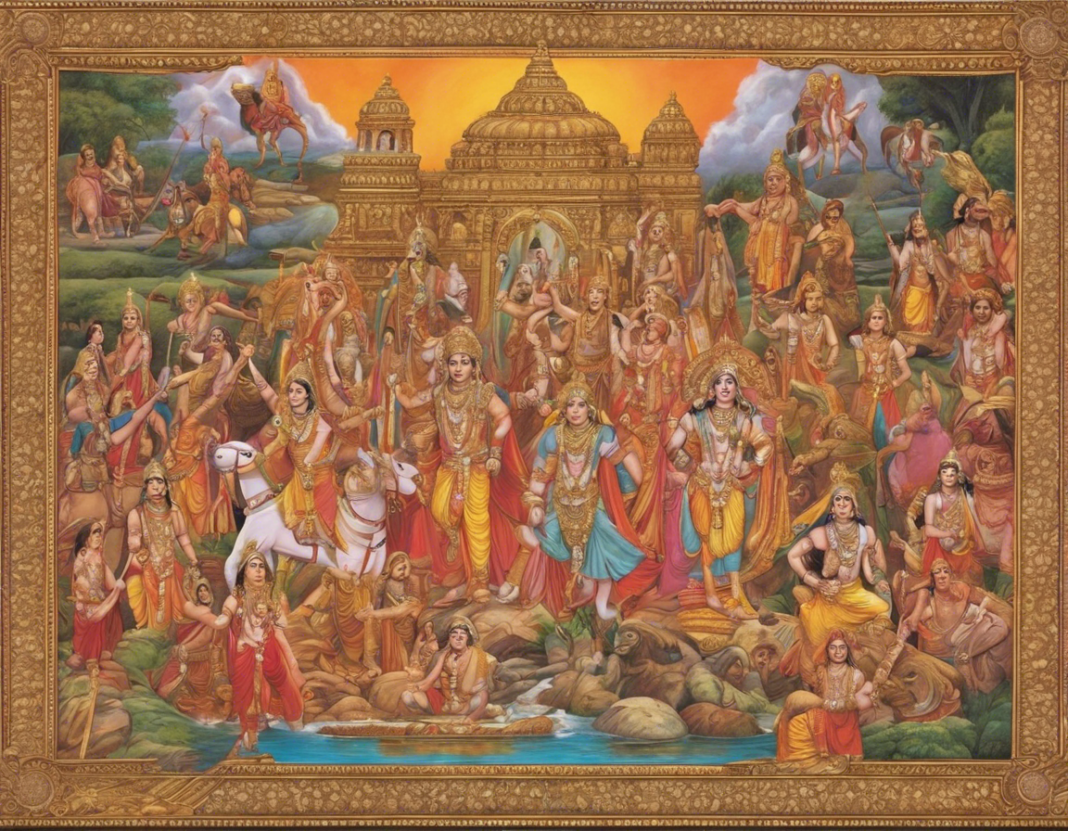The Mahabharata, one of the greatest epics of ancient Indian literature, is a treasure trove of wisdom, morals, and tales that have captivated readers for centuries. As a beginner looking to explore this vast epic in English, it can be an overwhelming task to navigate the complexities and nuances of the text. In this guide, we will delve into the Mahabharata, offering an overview of its themes, characters, and significance, as well as providing tips and resources for a fulfilling journey through this timeless masterpiece.
Introduction to the Mahabharata
The Mahabharata is an epic narrative of the Kurukshetra War and the fates of the Kaurava and Pandava princes. Written by the sage Vyasa, it consists of over 100,000 verses and is divided into eighteen books or parvas. The core of the epic is the conflict between the Pandavas, led by Yudhishthira, and the Kauravas, led by Duryodhana, over the throne of Hastinapura.
Themes and Lessons
The Mahabharata is not just a tale of war and strife but a profound exploration of dharma (duty), karma (action), and moral choices. It raises timeless questions about righteousness, loyalty, justice, and the consequences of one’s actions. The characters in the epic face complex moral dilemmas that resonate with readers across cultures and generations.
Key Characters
1. Yudhishthira
As the eldest of the Pandavas, Yudhishthira embodies truth and righteousness. Known for his unwavering adherence to dharma, he faces numerous trials and tribulations throughout the epic.
2. Arjuna
A skilled archer and key warrior in the Pandava camp, Arjuna is renowned for his valor and integrity. His moral dilemma on the battlefield is the centerpiece of the Bhagavad Gita, a sacred text within the Mahabharata.
3. Krishna
Often referred to as Lord Krishna or Krishna Vasudeva, he serves as Arjuna’s charioteer and guide in the Bhagavad Gita. Krishna imparts philosophical wisdom and divine counsel to Arjuna, setting the stage for the epic battle.
Significance of the Mahabharata
The Mahabharata holds immense cultural and religious significance in India and beyond. It is not just a work of fiction but a spiritual guide that offers insights into the nature of existence, human behavior, and the cosmic order. The teachings of the Bhagavad Gita continue to inspire seekers on the path of self-discovery and enlightenment.
Tips for Reading the Mahabharata
-
Start with an abridged version: Consider reading a summarized or abridged version of the Mahabharata to grasp the main storyline before diving into the complete epic.
-
Focus on key stories: Pay attention to the main narratives and subplots that highlight the central themes and character development.
-
Seek supplementary materials: Explore commentaries, scholarly articles, and online resources to deepen your understanding of the text and its cultural context.
-
Take notes: Jot down key points, character relationships, and symbolism to enhance your comprehension and analysis of the epic.
-
Reflect and discuss: Engage in discussions with fellow readers or join a book club to exchange ideas, interpretations, and insights on the Mahabharata.
Resources for Further Exploration
- “The Mahabharata” translated by C. Rajagopalachari
- “Mahabharata: A Modern Retelling” by Carole Satyamurti
- Online platforms: Websites like Sacred Texts and Internet Archive offer free access to English translations of the Mahabharata.
Frequently Asked Questions (FAQs)
1. What is the Mahabharata?
The Mahabharata is an ancient Indian epic that narrates the story of the Kurukshetra War between the Kauravas and Pandavas, exploring themes of dharma, karma, and moral choices.
2. Who wrote the Mahabharata?
The Mahabharata is traditionally ascribed to the sage Vyasa, who is also a character within the epic.
3. What is the Bhagavad Gita, and where does it appear in the Mahabharata?
The Bhagavad Gita is a sacred text within the Mahabharata, comprising a dialogue between Lord Krishna and Arjuna on the battlefield of Kurukshetra.
4. What lessons can be learned from the Mahabharata?
The Mahabharata offers insights into concepts like righteousness, loyalty, justice, and the consequences of one’s actions. It prompts readers to reflect on moral dilemmas and the complexities of human nature.
5. How can beginners navigate the complexities of the Mahabharata?
Beginners can start by reading abridged versions, focusing on key stories and characters, seeking supplementary materials, taking notes, and engaging in discussions with other readers.
6. Is the Mahabharata relevant today?
Yes, the Mahabharata’s exploration of universal themes and moral dilemmas makes it relevant across cultures and time periods. Its teachings on duty, ethics, and spirituality continue to resonate with readers worldwide.


